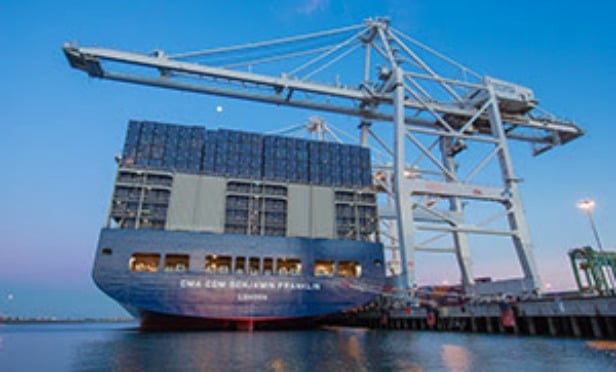 Cargo volumes are continuing to fall at the Port of Long Beach. For three consecutive months cargo volumes have either declined or remained flat, and in September, cargo volumes remained relatively flat, down .1% year-over-year. The recent slip in cargo volumes is largely driven by ship carrier alliances. Despite the slowdown in recent months, however, the port closed its fiscal year up 10.7% over its fiscal year in 2017. The significant year-over-year increase positions the port to close 2018 with a record year, even with the cargo volume declines.
Cargo volumes are continuing to fall at the Port of Long Beach. For three consecutive months cargo volumes have either declined or remained flat, and in September, cargo volumes remained relatively flat, down .1% year-over-year. The recent slip in cargo volumes is largely driven by ship carrier alliances. Despite the slowdown in recent months, however, the port closed its fiscal year up 10.7% over its fiscal year in 2017. The significant year-over-year increase positions the port to close 2018 with a record year, even with the cargo volume declines.
“The Port's volumes are a reflection of the U.S. economy. That's been strong, and the dollar is performing well,” Eric Bradley of the Port of Long Beach tells GlobeSt.com. “Americans have more spending power and their demand for goods means retailers are buying more. The tariffs exchanged by Washington and Beijing are another factor. Businesses anticipated the tariffs and stocked a lot of inventory earlier in the year.”
The Port of Long Beach has seen record-breaking cargo volumes for the last two years, and will likely see another record-breaking year in 2018. “Long Beach is a primary trade gateway for manufacturing in East Asia,” says Bradley. “The Port has broken its record for container movement two times in two years. We're investing our revenues into our best-in-the-nation infrastructure to stay ahead of competition. We are confident the value we offer our customers will be attractive to them well into the future.”
Technology upgrades and modernization efforts have helped the port both boost activity and handle the volume of cargo that passes through the port. “We're well positioned in terms of facilities and service to handle the increase in trade that has come in recent years,” explains Bradley. “We're always expect to attract more trade, so we reinvest in our Port and provide top-notch service to our customers.”
Generally, cargo volumes closely align with consumer spending—which has been a major driver of economic activity this cycle. As a result, cargo volumes can be a good indicator of economic activity. “We always expect our volumes to closely mirror consumer spending and the overall U.S. economy,” says Bradley. “September 2017 was the busiest September in the port's 107-year history. This past September saw 415 fewer TEUs move through the harbor and was the second-busiest September ever.” During that time, imports decreased 2.5% to 357,301 TEUs compared to the previous year, exports were down 3% to 121,561 TEUs, and empty containers increased 5.9%, to 222,343 TEUs.
© Touchpoint Markets, All Rights Reserved. Request academic re-use from www.copyright.com. All other uses, submit a request to [email protected]. For more inforrmation visit Asset & Logo Licensing.






